#Rematriate
Explore tagged Tumblr posts
Text

#rematriate#bring back matriarchy#landback#still voted against the womanhating religious right despite being against this entire colonizer state i don't need msgs telling me to vote#i am so serious males cannot count as my representatives i have no representative government and no allegiance to male theocracy
9 notes
·
View notes
Text
Some good news for today!
#Scotland#Nisga'a#i really like the term rematriation#This is a really sizable return#I'm very happy it's happening and i hope it triggers more returnings in respectful eays
44 notes
·
View notes
Text

Trajectories and Movements of Filipino People: Diasporic Objects and Possibilities for Rematriation, Marian Pastor Roces (Alliance Français Manila, September 7, 2024)


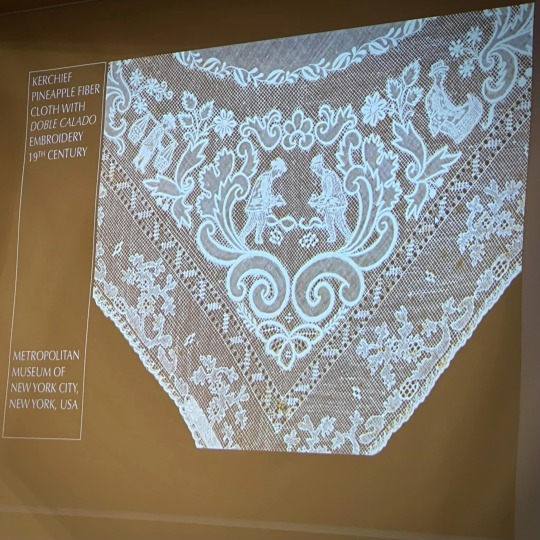

(Photos from Tara Illenberger, Facebook. We attended the same talk, though I was not able to take much photos as much, since I was not seated at the front. 😅)
Would like to start this post by saying that it was such an honor to have met Marian Pastor Roces again. For my would-be followers who are yet to read my blog posts, especially those who are situated abroad, I would like to introduce Marian Pastor Roces to you. MPR is an art critic, museum curator (and creator, in a comical sense), writer, political analyst, and cultural critic. She has hosted the establishments of numerous cultural initiatives that concern cultural heritage of ethnic groups in the Philippines. She is also a writer of essays and books, and an editor for Mapping Philippine Material Culture — a global archive of the different diasporic Filipino art and antiquities.
I met her the first time when I hosted a talk for her at my university. Terrific woman. I wish I had learned about her way sooner, from when I was a kid. Then, I would not have been so indecisive of what I wanted to be when I grew up and knew that I wanted to be a cultural heritage lawyer from the start, haha!
Something this talk proved further was the very principle that
cultural objects have memory too,
much like how much of the movements of Filipino people are reflected in the movements of its cultural objects.
Click read more to read the notes I got from the talk! ⬇️
There were three events that mark as significant events and turning points in the movements of the Filipino people.
Austronesian Migration: Wherein a seaborne migration set sail from the island of Taiwan to Batanes, in Northernmost Philippines. Objects traced and left behind by our Austronesian ancestors revealed marks of cultural connections along their trail.
1887 Madrid Exposition: Wherein maltreatment from the colonial Spaniards sought to display people of the Igorots in Human Zoos. The Filipino people have become an object themselves according to the colonizer.
Philippine Diaspora and Globalization: Wherein Filipino artifacts are now dispersed in cultural and archival institutions globally. Now, the material culture heritage of the Philippines is in large measure overseas. Filipinos do not have access to much of the material evidence of our heritage. Among the outcomes of this unknowing is an abyssmal loss of measures of quality that Philippine Peoples enjoyed until about a century ago.

The substantial collection of the National Museum of the Philippines was nearly totally destroyed during the Second World War, the same event which led to the adopted of the 1954 Hague Convention, briefly discussed in the previous post.
Material Culture Studies were not a significant area of work for Philippine Studies during the Post-War Period.
Philippine Material Culture collections started to be an activity in the 1970's.

What is lost to the Filipinos, as diasporic objects are detached from them?
Key pieces that embody the most ✨ sublime ✨ levels of cultural expression in material form by specific Philippine Peoples. Here, Marian does not refer to these pieces by the quantity of cultural objects being produced, but by the quality of it. You can get traditional, authentic fabric anywhere in the region where the community resides — but all the ones that were made special, limited, and ceremonious are all stored in museums abroad.
Key pieces for which no equivalent exists.
The full range of variations of certain traditions, as expressed by the artists of specific community.
The opportunities to study continuities or commonalities between and among parts of the Philippine experiences that are normally separated.
Accurate analysis of what is Philippine — and thus to inform policy.

WHO DO YOU RETURN THE OBJECTS TO? Repatriation vs. Rematriation
Repatriation:
Nation-state as destination of return.
The loss of legitimacy or ethical high ground of holdings of powerful entities.
Rematriation:
Not return to the state — but the people who made them.
Though legal processes are able to create a process for repatriation, you cannot template rematriation.
You need to built trust with the community you are rematriating to.
The Legal Practice and Rematriation:
Cultural Heritage law centers more on private/institutional ownership (i.e. cultural property). However, Cultural Heritage is inherently collective. Hence, what we need is a legal basis for cultural custodianship as well — in collaboration in both the communal (discourses among the ethnic group), and international (UNESCO).
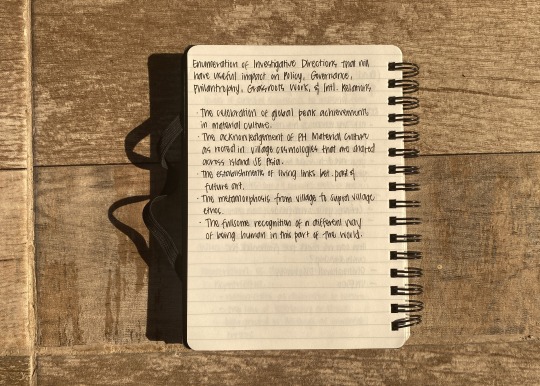
Enumeration of Investigative Directions that will have useful impact on Policy, Governance, Philantrophy, Grassroots Work, and International Relations, with regard to Philippine Material Culture
The celebration of global peak achievements in material culture.
The acknowledgement of Philippine Material Culture as rooted in village cosmologies that are shared across island Southeast Asia.
The establishments of living links between past and future art.
The metamorphosis from village to supra village ethos.
The fullsome recognition of a different way of being human in this part of the world.

#antiquities#culturalheritage#culture#literary theory#society#literature#art#history#museums#museum studies#provenance#repatriation#reMatriation
4 notes
·
View notes
Photo
Another great link to find out whose land you’re on is https://native-land.ca - it’s really well-designed and provides links to more information on nations, languages, and treaties outlined on the map.
I’m currently living on Ramaytush/Ohlone land and grew up on Tatavium, Tongva, and Chumash land. These people are still here and are still fighting for self-sovereignty within their own homeland. There are many Indigenous organizations and projects you can help support - I know that Sogorea Te’ Land Trust (https://sogoreate-landtrust.org) is doing incredible work near me in the Bay Area (Ohlone/Villages of Lisjan land) for land back/rematriation initiatives and cultural revitalization.
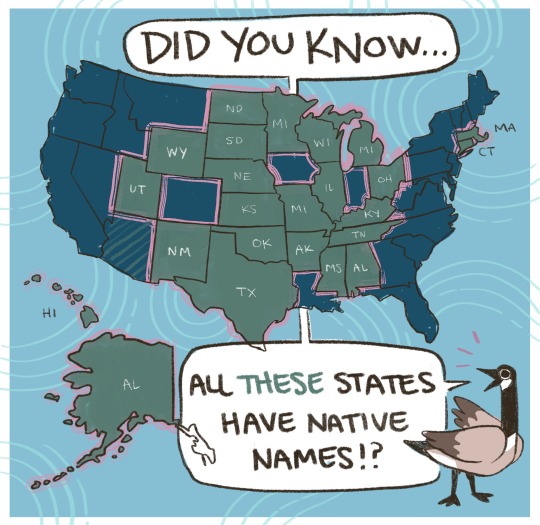
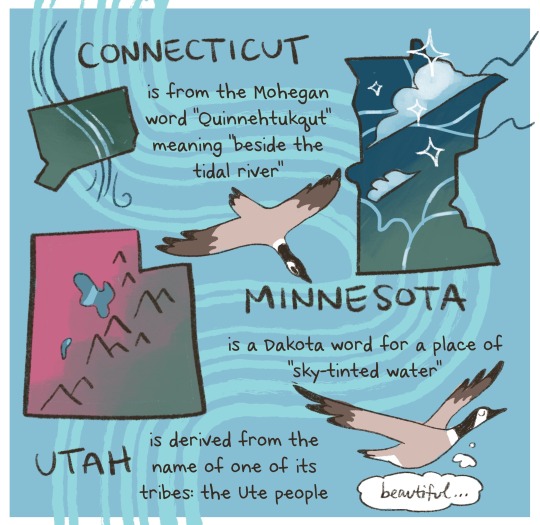
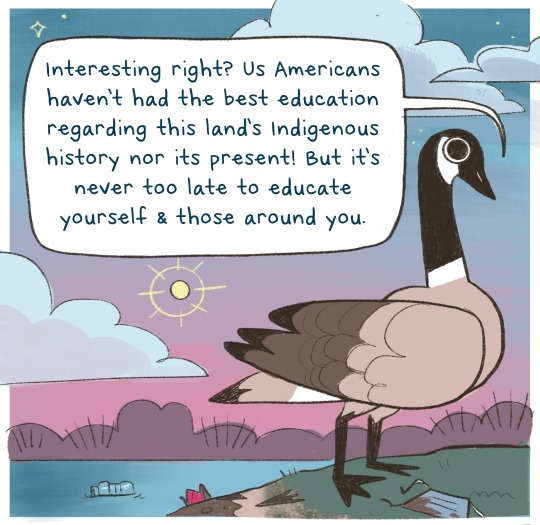


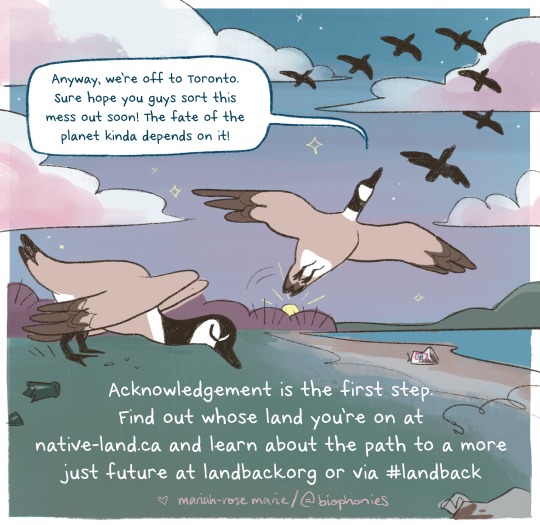
ah, i’m so bad at posting here. acknowledging this Day of Mourning from the lands of Kiikaapoi, Peoria, Potawatomi, Myaamia & Ochethi Sakowin people, aka Chicago, derived from a native word for garlic (mmm…) which is really suitable for me because I live here now 🌱🧄✨
whose.land are you on? talk about it over dinner this weekend with your fam & what it means to give the #landback. considering everything, listening & learning from indigenous people is the least you can do.
#indigenous#landback#land back#ohlone#ramaytush#tetavium#tongva#chumash#rematriation#turtle island#i realize it’s not november yet but i don’t want to wait to reblog#indigenous territory#indigenous land#indigenous sovereignty#comic#art#borders#sogorea te’ land trust#villages of lisjan#lisjan
96K notes
·
View notes
Text
is this a good time to mention the irony of settlers in the us campaigning so hard for change in palestine while they (the us settlers) are literally occupying native land?
1 note
·
View note
Text








One of the most fruitful outcomes of my years of engaging in the arts and arts-integrated environmental education is my understanding of how valuable story telling can be for sparking curiosity in the general public. With conservation and restoration work we need good stories. Many of us have become accustomed to damaged or degraded lands, such that we might defend antiquated land-use practices or ecological conditions, such as dams and vast English ivy sprawl. When the dams at Copco Lake came down, the residents were rightly shocked at what appeared to be a loss of natural beauty. But when photos started being shared of community coming together to replant, new blooms emerging in a once artificial lake, and indigenous tribes once again enjoying traditional lands it became clear that these sorts of projects are all for the best. With good photos come a visual clue into how worthwhile it is to initiate what might appear to be an unfamiliar or unwelcome change in landscape. My passion for photographing community science and land restoration projects is rooted in sharing these incredible stories of collaboration, rematriation, and a future of climate care.
#landrestoration#community#conservation#rematriation#landback#communityscience#artsintegration#pacificnorthwest
0 notes
Text
Binaries never work. Even life and death is not a dichotomy. Life fights like hell, and death often comes slowly. I hate the idea that all life leads to death and vise versa. Life transforms into new life and that which animates will animate again. Matter is never created or destroyed. Etc
I think this is coming up for me as a climate activist because I too have fallen prey to the mentality that if the earth is dying, then it is inevitable that she will die, so really, why do anything?
But it’s not that simple. The fact that she is still alive means that she is still living, not dying, living and trying to heal herself and flourish. If even a fraction of natural places still exist, they are worth fighting like hell for.
There are millions of people in Gaza. The 20,000 killed have made a horrific, irrevocable impact on culture, nature and land tending, in addition to the destruction of precious family lines, many of whom will never recover. And even in the face of such unthinkable, sudden, tragic death, the people have Palestine are still fighting, and still alive. Despite the pain and fear, we cannot give up hope. Giving up hope is the same as complacency, which is the same as complicity. When we give up hope because we believe something is dying, we turn our back on that which is still alive.
It is all of our duty to fight for indigenous lands and people who already fight like hell for their own survival. The fight is already there. We are just asked to join the fight. Accept that all you can do is what you can do, and then (this is the important part) do what you can.
We are part of the environment. There is no moving on.
#text#free Palestine#rematriation#land back#protect indigenous land#free Gaza#stop the genocide#reminders#for me#just for me
1 note
·
View note
Text
Well, more likely the seed is that little potted guy Dell tends to in the credits.
The first thing to tip me off to the colonialism subplot/subtext was when they talked about the forests dying from traditional practices in little comments by the Bat Queen and Eda and Dell. Felt kinda like how you forget that the prince was mentioned in Howl's Moving Castle until the very end. In this case it's an offhand remark until you learn Belos is using up the wood, as well as other significant natural resources, to create his Grimwalkers. I'm pleased they carried out the tree stuff to the end.

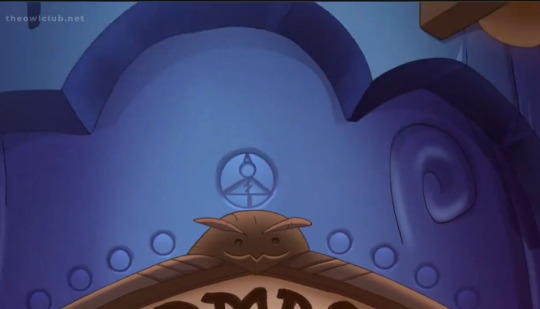
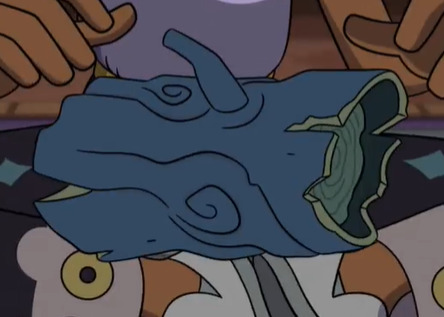
Remember how they pointed out that Palistrom wood was becoming rarer? Because Belos kept over harvesting it and not giving it time to grow back?
The University’s tree is blue. Its a big ass Palistrom tree
#THE SEED'S A METAPHOR#ABOUT THE NEW GOODWILL BETWEEN DELL AND EDA#BUT ALSO ABOUT RESTORATION OR REMATRIATION OR WHATEVER TERM YOU WANT TO USE FOR IT
1K notes
·
View notes
Text
Decolonization is, put bluntly, the rematriation of land, the regeneration of relations, and the forwarding of Indigenous and Black and queer futures—a process that requires countering what power seems to be up to. To take effective decolonizing action, we must then have a theory of action that accounts for the permeability of apparatuses of power and the fact that neocolonial systems inadvertently support decolonizing agendas. […] Colonial schools have a tradition of harboring spaces of anticolonial resistance. These contradictions are exquisitely written about by the eminent novelist, literary scholar, and postcolonial thinker Ngũgĩ wa Thiong’o. He describes how the machine of British colonial schooling in Kenya produced a Black governor of colonial Kenya and, paradoxically, also helped to produce Mau Mau revolutionaries. Fearful that schools sheltered the Mau Mau, who occupied the imaginations of Indigenous Kenyans and settlers alike as he quintessential Black, violent resistance movement, the colonial state banned many of its missionary-inspired schools in the 1952 declaration of a state of emergency. This ban included the Kenya Teachers College, whose campus was converted into ‘a prison camp where proponents of resistance to colonialism were hanged.’ During the Mau Mau Rebellion, [Ngũgĩ] attended Alliance High School, a segregated, elite missionary school for Black Africans in British Kenya. And prior to that, he attended Manguo elementary school, which was banned for a time by the colonial government. How can colonial schools become disloyal to colonialism? According to [Ngũgĩ], the decolonial is always already amid the colonial.
la paperson, A Third University Is Possible (Duke University Press, 2017), pp. xv–xvi, summarising Ngũgĩ wa Thiong’o’s Dreams in a Time of War: A Childhood Memoir.
37 notes
·
View notes
Text
Sometimes I feel sad because the Temperance Brennan they depict in the tv show Bones (not the version of her in my heart) is an incredibly regressive, old fashioned kind of anthropologist
I struggle to picture her being pro rematriation of human remains and that sucks
Anyway just like…. Know that Tv show Brennan has very little to do with actual contemporary cultural anthropologists. And NAGPRA is legit and a moral calling and anyone working to hinder that work sucks shit
#temperance brennan#bones tv#credentials: most of my PhD program peers are anthropologists#*cultural anthropologists#I know enough to know the juicy fucked up shit
15 notes
·
View notes
Text
8 notes
·
View notes
Text

A group of Indigenous students from Cornell University are planning a four day fast from Tuesday, April 30th to Friday, May 3rd to show their solidarity with Palestine. The fasters are braiding ribbons to wear as armbands in colors of the Palestinian flag and to signify their fast. Leaning into their cultural practices of fasting and community support, they discussed how fasting is a tool for personal growth, collective healing and community building. Rematriation’s team had the opportunity to sit with two Indigenous students at Cornell to discuss their decision to fast in solidarity with Gaza. Yanenowi Logan and Amaya Garnenez are helping organize the fast and have emphasized its power in reflection, prayer, and community engagement. The students both also shared the connection between colonialism and the resulting weaponization of identity, resources and land. The genocide of Palestine aligns with the struggle Indigenous Peoples’ have faced and continue to push back against in this country.
[...]
Cornell University’s environment has long felt like an unsafe space for many Indigenous students. In recent news, anti-indigenous rhetoric has evolved on campus, including violent and aggressive statements online. Indigenous students continue to pursue action from the University’s administration on historical injustices. Many expressed frustration with Cornell University’s lack of action on Indigenous demands for rematriation of stolen land and lack of acknowledgement of its participation and benefit as one the country’s largest Land Grant Institutions.
[...]
Inspired by students at Brown University, Indigenous students at Cornell are seeking to reclaim their spot in the movement and connect their demands to their Indigenous identity. A group of students from different Indigenous nations at Cornell University decided to fast in solidarity with Palestine, citing cultural and spiritual practices as protection under university policies. This is a group of individuals who want to hold prayer with community, in solidarity with Gaza.
[...]
Student groups at Cornell formed The Coalition for Mutual Liberation and have begun an occupation of the University’s Arts Quad. “Liberated zone” encampments have been created on campus, a sign of growing support for the movement, calling for Cornell to divest from weapons manufacturers that are complicit in the ongoing violence in Gaza.
[...]
On the Coalition for Mutual Liberation’s webpage https://cmlithaca.org/about-us, the Coalition sets forth the following demands to Cornell University’s administration: 1. Acknowledge its role in the national genocide of Indigenous Peoples through the Morrill Act and its sale of nearly 977,909 of Indigenous land; return all mineral interests to Tribal Nations dispossessed by the Morrill Act; provide restitution for the dispossed nations; provide restitution for the Cayuga Nation; establish an Indigenous Studies department; and return surplus land in New York state to the Haudenosaunee Confederacy, the Lenni Lenape (NYC campus), and their descendants who have been forced out of New York. 2. Annually disclose a comprehensive account of its endowment and land holdings, and divest from entities, involved in ‘morally reprehensible activities,’ in accordance with Cornell’s 2016 Standard to Guide Divestment Consideration. 3. End profit-generating partnerships, volunteer arrangements, and other significant corporate and academic affiliations with institutions involved in ‘morally reprehensible activities’ including but not limited to the dissolution of the Jacobs-Technion Cornell Institute and all other partnerships with the Technion Israel Institute of Technology. 4. Call for an unconditional, permanent ceasefire in Gaza. 5. Establish a Palestinian Studies program housed in the College of Arts and Sciences, along with an accredited minor that is available to all undergraduate and graduate students. Representatives from Cornell’s chapter of ‘Students for Justice in Palestine’ must serve on the committees that oversee the hiring of the program’s faculty. 6. Publicly acknowledge and protect anti-Zionist speech, viewpoints, and histories in both religious and academic contexts. Recognize the legitimate and historical claim that anti-Zionism is not anti-Semitism. 7. Remove all police from campus, beginning with the elimination of police presence at demonstrations. Replace police with an emergency response team composed of healthcare workers and first responders trained in de-escalation. A majority of team members must be providers who share lived experiences and identities with Cornell’s diverse student body. 8. Ensure total legal and academic amnesty for all individuals involved with the Liberated Zone and related demonstrations.
-- From "Cornell Indigenous Students Fast to Support Palestine: A Cultural Practice in Community for Solidarity" by Caryn Miller (Seneca) and Afton Lewis (Diné) for Rematriation, 1 May 2024
17 notes
·
View notes
Text
Below: Installation view of Mónica de Miranda, Sónia Vaz Borges, and Vânia Gala, Greenhouse (2024) at the Portugal Pavilion (photo Anna Souter/Hyperallergic)

Pavilions throughout the Biennale reveal the complex and often deeply painful nature of these questions around colonialism, land, and identity. But where the Dutch pavilion leaves a strange taste in the mouth, the Portuguese, Hãhãwpuá, and Irish pavilions shed useful light on how relationships between people and contested land can be nuanced, paradoxical, and even fruitful, uncovering fertile ground for resistance, restitution, and regeneration.

10 notes
·
View notes




















